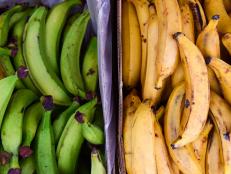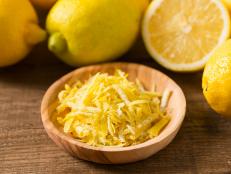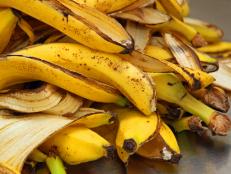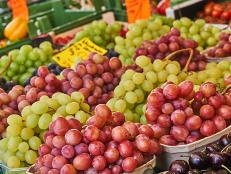What to Know About the Santa Claus Melon
Why is it named after St. Nick?

ABERRATION FILMS LTD/SCIENCE PHOTO LIBRARY/Getty Images
By Fraya Berg for Food Network Kitchen
Fraya is a chef and a contributing writer at Food Network.
The delightful name of this melon might have you intrigued. Read on to find out more info on its moniker (and other names it goes by) plus how to cut and serve the Santa Claus melon if you’re lucky enough to find one.

PicturePartners/Getty Images
What Is a Santa Claus Melon?
The Santa Claus melon, also known as the Christmas melon, is native to Spain and South America, where it goes by the name Piel de Sapo. It’s now cultivated in North America too – particularly in California and Arizona – which harvest the melon in June through October and ship it to specialty markets across the U.S. After harvest, the Santa Claus melon will keep for two months at room temperature, meaning they can still be in markets around Christmas time – hence their festive name.
Take one look at a Santa Claus melon and you’ll see it looks quite like a watermelon, only smaller and slightly oblong. Its yellow and green striped skin is netted like that of a honeydew (the term netted means slightly bumpy in texture). Under the skin you’ll find yellow-green (or sometimes peachy) colored flesh.

Josef Mohyla/Getty Image
What Does a Santa Claus Melon Taste Like?
Sweet, lightly earthy and reminiscent of the flavor of honeydew or crenshaw, the Santa Claus melon can be enjoyed plain or used in place of other types of melon in recipes.
How to Buy and Store Santa Claus Melon
Since the Santa Claus melon has thick skin, smelling the melon and looking for a strong melon aroma isn’t possible. Instead, feel the end of the melon: it’ll be slightly soft when its ripe. The riper the melon, the yellower the skin. Store unopened melons on your counter for up to two months and cut melons in the refrigerator for three to five days.
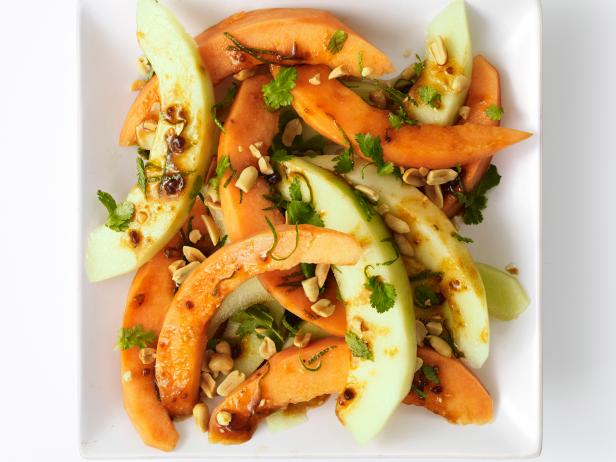
Antonis Achilleos
How to Cut and Serve Santa Claus Melon
Cut a Santa Claus melon exactly like you’d cut a cantaloupe: with a sharp chef’s knife. Slice it in half, scoop out the seeds and cut the flesh into wedges or scoop it out with a melon baller or spoon.
A simple drizzle of lime juice and a sprinkle of salt is a fantastic way to complement its flavor. A salty cheese is a good pairing with the sweetness, too. Here are some serving ideas: drape prosciutto slices over thin wedges, mix chunks into a fruit salad, add pieces to sangria, blend it into a smoothie or puree it with sugar in an ice cream maker to create sorbet.
Substitute for Santa Claus Melon
Santa Claus melons are not the most common, so if you happen to have a recipe that calls for them, you might need a substitute. Cantaloupe, honeydew and casaba are the most readily available melons that will deliver that sweet, earthy flavor.
Recipes for Santa Claus Melon
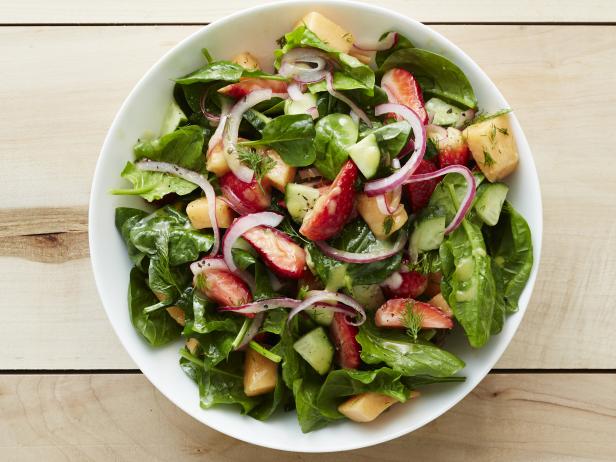
Ryan Liebe
Southeast Asian flavors bring salt, spice and acid to the sweet flavors in this fruit salad. Delicious with any ripe melon you choose, this recipe would be a particularly spectacular way to showcase your special Santa Claus melon.

Charles Masters
Cucumber and melon play well together because they’re cousins in the same plant family. If you find Santa Claus melon in the summer, this simple fruit salad is a great way to let it shine.

Matt
Cumin-toasted almonds bring fragrance and crunch to this unique recipe, which calls for you to toss your sweet melon in olive oil and fresh tender herbs.
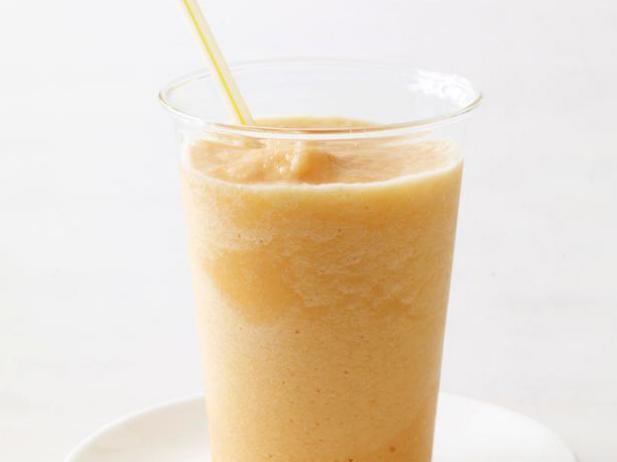
When in doubt, throw you melon into a smoothie – or, better yet, a shake. Santa Claus melon is a truly sophisticated way to up the ante on a classic, nostalgic vanilla ice cream-based shake.
Related Links:























